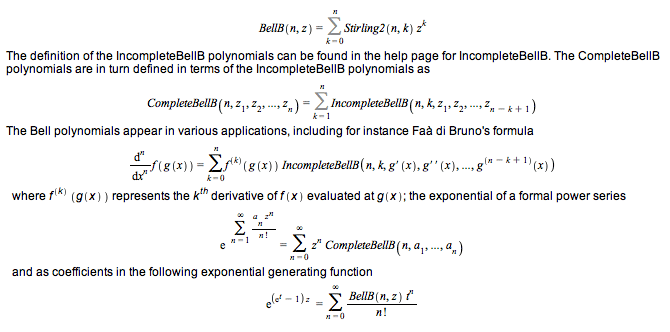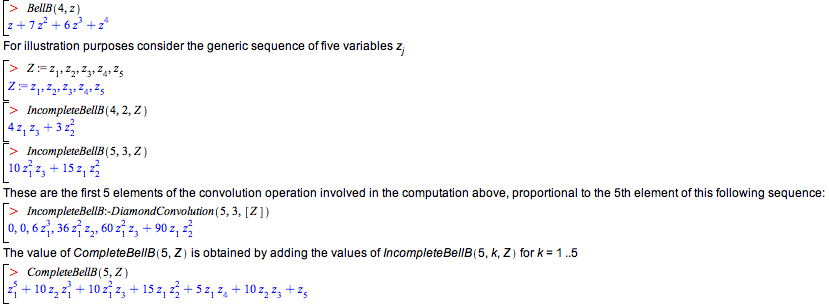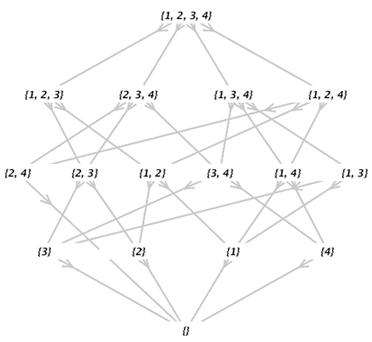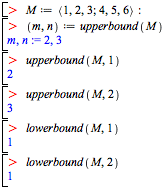| New Features in Maple 15: Other Improvements |
|
 |
Numerous additional improvements have been made to the computational engine in Maple 15. Notable examples include:
The Bell polynomials
New in Maple 15, BellB, IncompleteBellB and CompleteBellB respectively represent the Bell polynomials, the incomplete Bell polynomials - also called Bell
polynomials of the second kind - and the complete Bell polynomials. The BellB polynomials are defined in terms of the Stirling numbers of the second kind as

For example:


The Magma Package
 |
The Magma package provides facilities for computing with small finite magmas (sets with a single binary operation). Magmas are represented by their Cayley tables.
The package includes commands that allow you to:
- Enumerate small magmas
- Test a given magma for a large number of predefined basic properties
- Test properties of magma elements
- Test whether two magmas are isomorphic
- Visualize the Cayley table of a small magma
- Compute distinguished subsets
More detail is available here |

Maple Debugger Improvements
The debugger commands cont, next, step, into, outfrom, and return can now be followed by an optional positive integer specifying the number of times the command is
to be repeated. For example,  instructs to debugger to continue execution for the next 10 statements in the current procedure. instructs to debugger to continue execution for the next 10 statements in the current procedure.

New Maple Programming Guide
The Maple Introductory Programming Guide and Maple Advanced Programming Guide have been combined into a single guide.
The new Maple Programming Guide provides updated information and examples, including:
- The latest Maple programming features
- An overview of Maple's data structures
- A new chapter on parallel programming
- Testing your code

Numelems
A new command, numelems, provides a single function to return the number of elements stored in any expression of type indexable.


Upperbound, lowerbound
New commands, upperbound and lowerbound, have been added to provide an easy way to find the upper and lower bounds of an object's dimensions.


Array and Table Support in the member Command
The member command can now determine if an expression is contained inside an Array, Matrix, or Vector.


Indices and entries
A new pairs option has been added to both of the indices and entries commands. This allows extraction of index = value pairs from a table or rtable.


Array Type Checks
Open-ended ranges are now allowed Array, Matrix, and Vector type check


EqualEntries command
The EqualEntries command compares elements inside two separate container structure. When comparing two container structures, the EqualEntries command returns true if the
two structures are the same kind of structure, have the same number of elements, and contain the same elements in the same order, with some exceptions.

CodeTools[Test]
The new command CodeTools[Test] has been provided as a front-end to the verify command to facilitate the creation of suites of tests for projects written in Maple.


Packed Record Structure
- The Record constructor function can now be called with the indexed name Record[packed], to produce a packed record.
- Unlike a regular record, a packed record does not create a unique instance of each field name for each record instance.
When working with thousands of similar records each with many fields, this can save a significant amount of memory.
- Fields of packed records do not exhibit last name evaluation. That is, the expression r:-a always produces a value, even if that value is a procedure,
table, Matrix, Vector, or another record.
- Similarly, it is not possible for a packed record field to not have a value. The assigned function will always return true, and unassigning a packed
record field will set its value to NULL instead.

|

